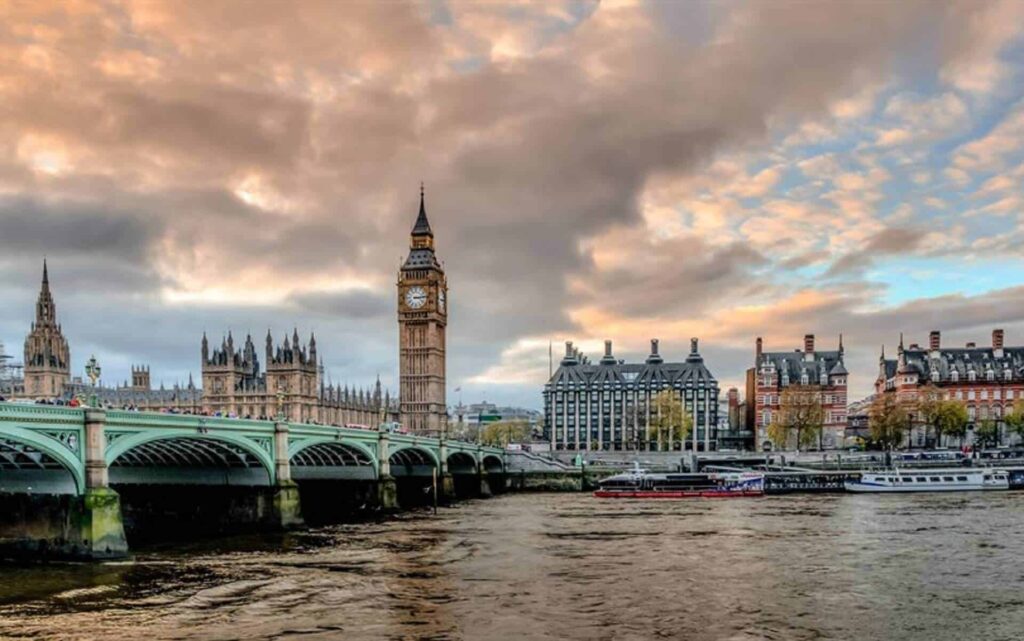Tower Bridge in London is a captivating blend of Victorian engineering prowess and architectural elegance. Spanning the River Thames, it serves as a vital link between the historic Tower of London on the north bank and the bustling Southwark district on the south bank.
The bridge’s defining feature is its two majestic towers, rising proudly above the river. These towers are connected by a central drawbridge mechanism, allowing the bridge to open and accommodate passing river traffic. This intricate design has made Tower Bridge an iconic symbol of the city, recognized worldwide.
Adorned with ornate Gothic details and featuring a striking color scheme of blue and white, Tower Bridge exudes a sense of grandeur and sophistication. Its design, reminiscent of a medieval fortress, reflects the rich history and heritage of London.
Visitors to Tower Bridge can explore its high-level walkways, offering panoramic views of the city skyline and the River Thames below. The Tower Bridge Exhibition provides fascinating insights into the bridge’s construction and operation, allowing visitors to appreciate its significance in London’s past and present.
Whether admired from afar or experienced up close, Tower Bridge never fails to impress with its timeless beauty and engineering ingenuity. As a symbol of London’s resilience and innovation, it continues to captivate the hearts and minds of people from around the world.
Overview
Travel is the movement of people between relatively distant geographical locations, and can involve travel by foot, bicycle, automobile, train, boat, bus, airplane, or other means, with or without luggage, and can be one way or round trip. Travel can also include relatively short stays between successive movements.
The origin of the word “travel” is most likely lost to history. The term “travel” may originate from the Old French word travail, which means ‘work’. According to the Merriam Webster dictionary, the first known use of the word travel was in the 14th century.
It also states that the word comes from Middle English travailen, travelen (which means to torment, labor, strive, journey) and earlier from Old French travailler (which means to work strenuously, toil). In English we still occasionally use the words “travail”, which means struggle. According to Simon Winchester in his book The Best Travelers’ Tales (2004), the words “travel” and “travail” both share an even more ancient root: a Roman instrument of torture called the tripalium (in Latin it means “three stakes”, as in to impale).












